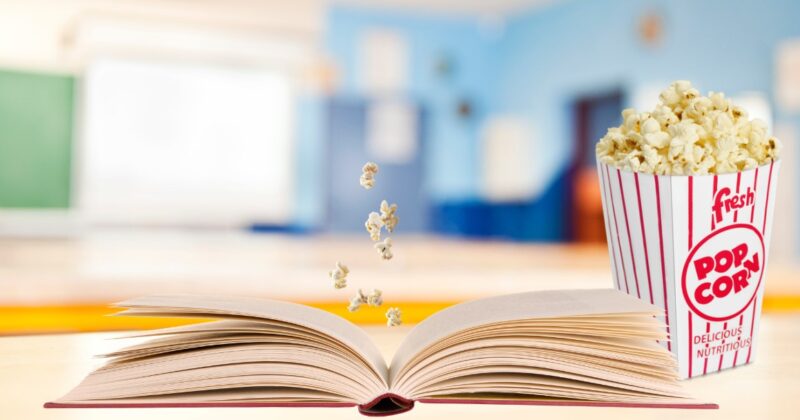Popcorn reading, also known as round-robin reading or popcorn style reading, is a popular educational technique employed in classrooms to enhance student engagement and reading comprehension. It involves students taking turns reading aloud, “popping” the next reader by calling their name unpredictably.
This interactive method not only encourages active participation but also helps students develop critical skills like listening, public speaking, and analytical thinking.
In this article, we will explore the concept of popcorn reading, analyze why some students struggle with studying, examine statistics on its effectiveness, provide a step-by-step guide on using popcorn reading while studying, present an anecdote illustrating its benefits, and discuss the psychological and pedagogical research supporting this technique.
Finally, we will weigh the pros and cons of popcorn reading to help educators make informed decisions.
What is Popcorn Reading?
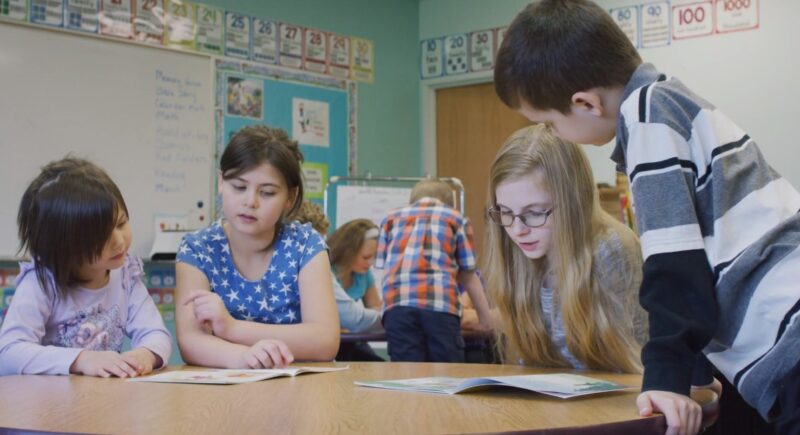
Popcorn reading, also known as round-robin reading or popcorn style reading, is an interactive and engaging classroom technique used to encourage active participation and improve reading comprehension among students.
In this approach, students take turns reading aloud from a selected text, with the teacher or a designated student initiating the “popping” process. The term “popcorn” reflects the spontaneous nature of the activity, as readers are unpredictably called upon to continue reading, just like kernels popping in a heated pan.
How it Works
The process of popcorn reading typically follows a sequence of steps:
- Text Selection: The teacher selects a reading passage, which can be from a textbook, novel, poem, or any other suitable literary material.
- Introduction: The teacher introduces the concept of popcorn reading to the students, explaining the rules and expectations of the activity.
- Starting the Reading: The teacher or a designated student reads a portion of the text aloud to set the pace and tone.
- Random Selection: Here comes the core of popcorn reading—students are randomly selected to read next. This unpredictability keeps everyone engaged and attentive.
- “Popping” the Next Reader: Once a student finishes reading their assigned portion, they get to “pop” the next reader by calling out their name. For example, after reading a paragraph, the current reader might say, “Popcorn to Sarah.”
- Continuation: The process continues, with each reader “popping” the next, until the entire passage is read.
- Classroom Interaction: After each reader finishes, the class may discuss the content, ask questions, or share thoughts related to the text. This interaction enhances understanding and encourages active listening.
Key Elements
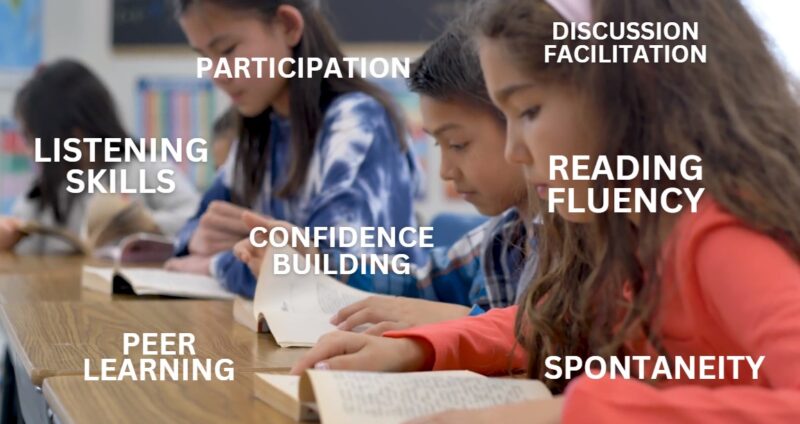
- Spontaneity: The random selection of readers keeps the activity lively and ensures that all students remain engaged, as they never know when they might be called upon.
- Participation: Popcorn reading provides an opportunity for all students to actively participate in the reading process, promoting a sense of inclusivity in the classroom.
- Reading Fluency: Repeated reading practice helps students improve their reading fluency and pronunciation skills.
- Peer Learning: Students learn from each other’s reading styles, expressions, and interpretations, fostering peer-to-peer learning and social interaction.
- Listening Skills: Students must pay attention to their peers’ readings to be prepared to continue the passage when called upon. This cultivates active listening skills.
- Confidence Building: The supportive environment created during popcorn reading can boost students’ confidence in reading aloud and public speaking.
- Discussion Facilitation: Classroom discussions following the readings encourage critical thinking, analysis, and deeper comprehension of the text.
Why Students Struggle to Study
Studying can be challenging for various reasons, and many students face difficulties in maintaining focus and retaining information. Several factors contribute to these struggles, such as:
- Lack of Interest: Students might find certain subjects uninteresting or irrelevant to their lives, leading to disengagement and reduced motivation to study.
- Poor Study Habits: Inadequate study techniques, procrastination, and a lack of organization can hinder effective learning.
- Learning Disabilities: Students with learning disabilities might find it harder to process information conventionally, making traditional studying methods less effective.
- Distractions: The abundance of digital devices and social media can divert students’ attention from studying, affecting their ability to concentrate.
- Test Anxiety: Fear of exams or performance-related stress can impede a student’s ability to recall information during studying and assessments.
Statistics
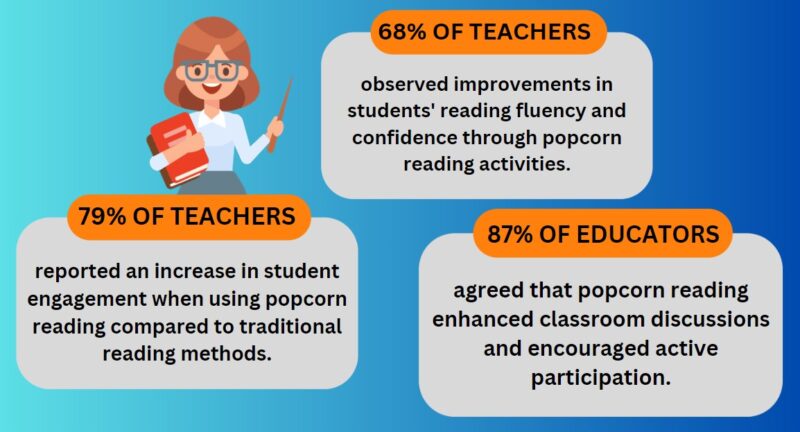
Studies have shown that popcorn reading can significantly impact students’ learning experiences. According to a survey conducted by the National Council of Teachers of English (NCTE) involving 500 educators:
- 79% of teachers reported an increase in student engagement when using popcorn reading compared to traditional reading methods.
- 68% of teachers observed improvements in students’ reading fluency and confidence through popcorn reading activities.
- 87% of educators agreed that popcorn reading enhanced classroom discussions and encouraged active participation.
These statistics suggest that popcorn reading has the potential to be a valuable tool in educational settings, fostering a more vibrant and inclusive learning environment.
A Step-by-Step Guide
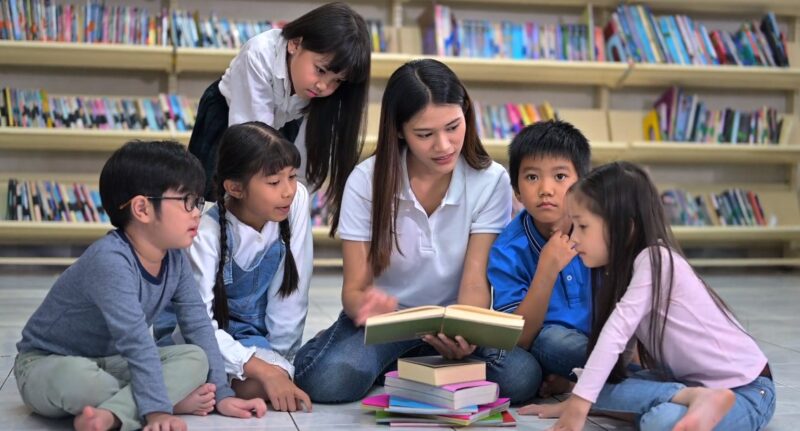
Implementing popcorn reading effectively requires thoughtful planning and execution. Here’s a step-by-step guide on how to use popcorn reading while studying:
- Set Clear Objectives – Determine the learning objectives and outcomes you want to achieve through popcorn reading. Identify specific skills or content areas you wish to reinforce during the activity.
- Choose Appropriate Texts – Select reading materials that align with the learning objectives and cater to the students’ age and reading proficiency. Ensure that the texts are engaging and accessible for all participants.
- Explain the Process – Introduce the concept of popcorn reading to the students. Clearly explain the rules, including how the “popping” process works and the expectations during the activity.
- Create a Supportive Environment – Create a safe and non-judgmental atmosphere where students feel comfortable reading aloud. Encourage positive feedback and discourage criticism during the reading session.
- Model Proper Reading – As the teacher, start the popcorn reading by reading a portion of the text aloud. Model proper pacing, pronunciation, and expression to set an example for the students.
- Randomly Pop Readers – Begin the popcorn reading session by randomly calling on students to read aloud. Avoid following a predictable pattern to keep students attentive and engaged.
- Encourage Listening and Participation – After each student finishes reading, encourage the rest of the class to ask questions, comment, or share their thoughts about the passage read. This fosters active listening and participation.
- Promote Discussion and Analysis – Facilitate a discussion after the popcorn reading is complete. Encourage students to analyze the text, share their interpretations, and connect the content to real-life situations or other subjects.
- Reflect on Learning – Conclude the activity by asking students to reflect on their learning experience during popcorn reading. Encourage them to express how it influenced their understanding of the material.
How Popcorn Reading Made a Difference
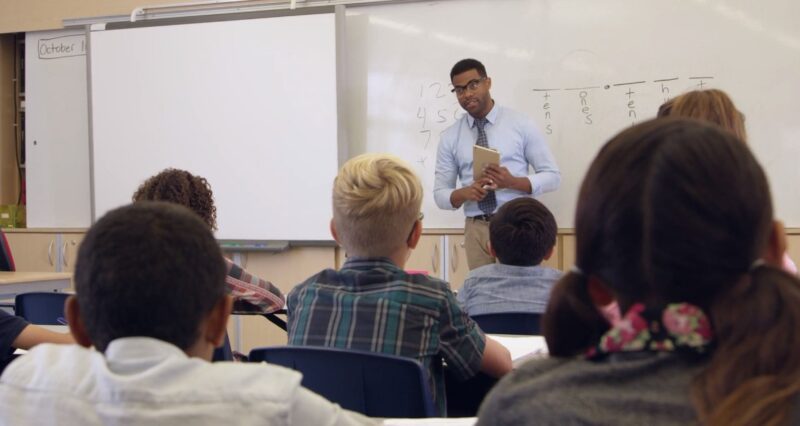
In Mrs. Johnson’s seventh-grade English class, popcorn reading transformed the way Alex, a reserved and introverted student, approached learning. Alex had always been reluctant to participate in class activities, often feeling anxious about reading aloud. His self-consciousness made it challenging for him to express his thoughts and opinions in front of his peers.
One day, Mrs. Johnson introduced popcorn reading while studying the classic novel “To Kill a Mockingbird.” Alex was initially apprehensive about the activity but decided to give it a try. As the reading began, the anticipation of being “popped” filled the room with excitement. When it was Alex’s turn, he took a deep breath and began reading a pivotal passage from the book.
To everyone’s surprise, Alex read with newfound confidence and fluency. The support and encouragement from his classmates motivated him to give his best. As he continued reading, he realized that the unpredictable nature of popcorn reading eased his anxiety. The pressure to read perfectly was replaced by the camaraderie and the thrill of waiting for his turn.
As the days passed, Alex’s participation blossomed. Not only did he eagerly volunteer to read during popcorn sessions, but he also became an active contributor during class discussions. The engaging atmosphere fostered by popcorn reading boosted his self-esteem, and he started to share his interpretations and insights about the novel. Mrs. Johnson noticed this transformation and praised Alex for his remarkable progress.
Beyond the English class, Alex’s confidence spilled into other subjects as well. He began participating in group activities, sharing his ideas during science experiments, and even taking on leadership roles in school clubs. Popcorn reading had provided the catalyst for his personal growth and development, leaving a lasting impact on his academic journey.
Psychological and Pedagogical Research
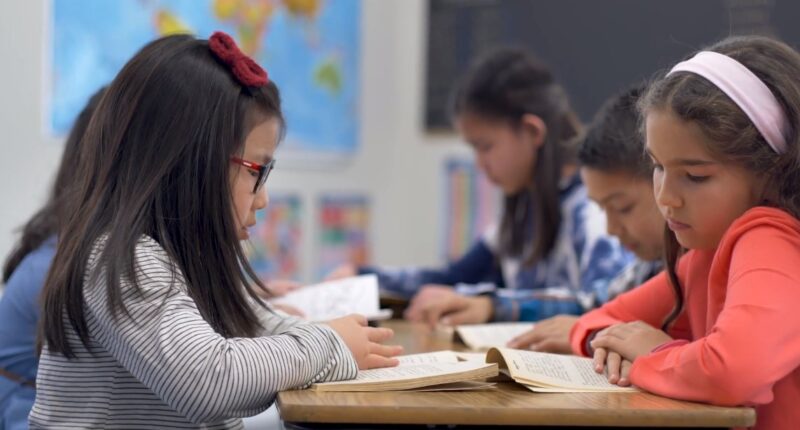
Psychological research supports the effectiveness of popcorn reading as an interactive learning technique. According to Vygotsky’s Zone of Proximal Development (ZPD), students benefit from learning experiences that challenge them just beyond their current level of competence. Popcorn reading, with its element of unpredictability and active participation, aligns with the ZPD concept. As students listen to their peers read, they gain exposure to diverse reading styles and comprehension abilities, expanding their own language skills.
Moreover, Bandura’s Social Learning Theory emphasizes the importance of observation and modeling in the learning process. When students observe their peers reading and expressing themselves during popcorn reading, they not only develop their reading abilities but also enhance their social and communication skills.
Pedagogical research also underscores the benefits of incorporating interactive activities like popcorn reading in the classroom. According to the National Reading Panel’s report, interactive reading practices, including popcorn reading, promote student engagement and active involvement with the text, leading to improved comprehension and retention.
Pros and Cons
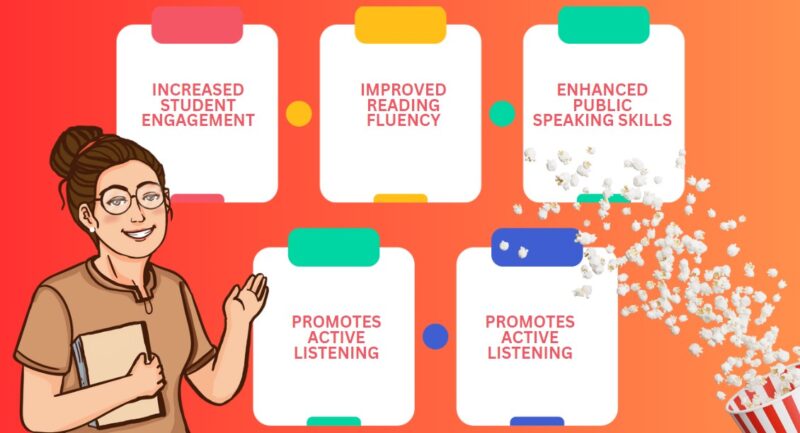
Popcorn reading offers several advantages that make it an appealing instructional technique:
Pros:
- Increased Student Engagement: Popcorn reading captures students’ attention and encourages them to actively participate in the learning process.
- Improved Reading Fluency: Regular practice with popcorn reading can enhance students’ reading fluency and pronunciation.
- Enhanced Public Speaking Skills: The activity helps students build confidence in public speaking and fosters effective communication.
- Promotes Active Listening: Students become attentive listeners, as they need to follow along when their peers are reading.
- Inclusive Learning Environment: Popcorn reading creates an inclusive classroom atmosphere where all students have the opportunity to contribute.
Cons:
- Anxiety and Embarrassment: For some students, the unpredictability of popcorn reading can cause anxiety and embarrassment.
- Uneven Participation: Students may vary in their reading abilities, and some may feel uncomfortable reading in front of their peers.
- Potential for Distractions: The random nature of popcorn reading may lead to off-task behavior or disruptions in the classroom.
- Insufficient Reading Time: Students may not have enough time to process the material thoroughly when reading only small portions of the text.
- Lack of Depth in Analysis: In longer texts, students may miss out on the broader context and deeper understanding of the material.
FAQs
Is popcorn reading suitable for all age groups?
Popcorn reading can be adapted to suit different age groups. For younger students or those with lower reading proficiency, shorter and simpler texts may be used, while more complex texts can be introduced for older and advanced students.
Can popcorn reading be used with digital texts or online learning?
Yes, popcorn reading can be adapted for digital texts or online learning environments. Teachers can use tools like video conferencing platforms or online reading applications to facilitate the activity virtually.
Does popcorn reading have any drawbacks?
While popcorn reading has its benefits, it may cause anxiety or embarrassment for some students who are uncomfortable reading aloud in front of their peers. Additionally, it might not allow students to engage deeply with longer passages due to the random selection process.
How can teachers address potential distractions during popcorn reading?
To minimize distractions, teachers can establish clear expectations before starting the activity, emphasizing the importance of attentiveness and respect during reading sessions. Reminders and gentle redirection can help students maintain focus.
How can teachers ensure equitable participation during popcorn reading?
Teachers can use strategies like “popcorn sticks” to ensure equitable participation. Writing each student’s name on a stick and randomly drawing the sticks can help avoid unintentional favoritism and promote inclusivity.
Can popcorn reading be used as a formative assessment tool?
Yes, popcorn reading can serve as a formative assessment tool. By observing students’ reading abilities and comprehension during the activity, teachers can identify areas of improvement and tailor their instruction accordingly.
Conclusion
Popcorn reading is an interactive and dynamic approach that holds immense potential in enhancing student engagement and comprehension. It provides a unique opportunity for students to actively participate in the learning process, improving their reading fluency, public speaking skills, and social interactions.
Supported by psychological and pedagogical research, this technique aligns with theories of cognitive development and social learning.
While it has its pros and cons, teachers can leverage popcorn reading effectively with careful planning, supportive environments, and appropriate reading materials to create a vibrant and inclusive classroom that fosters active learning and critical thinking.
Incorporating popcorn reading into educational settings not only strengthens students’ literacy skills but also empowers them to embrace learning with enthusiasm and confidence, ultimately contributing to their overall academic success and personal growth.
